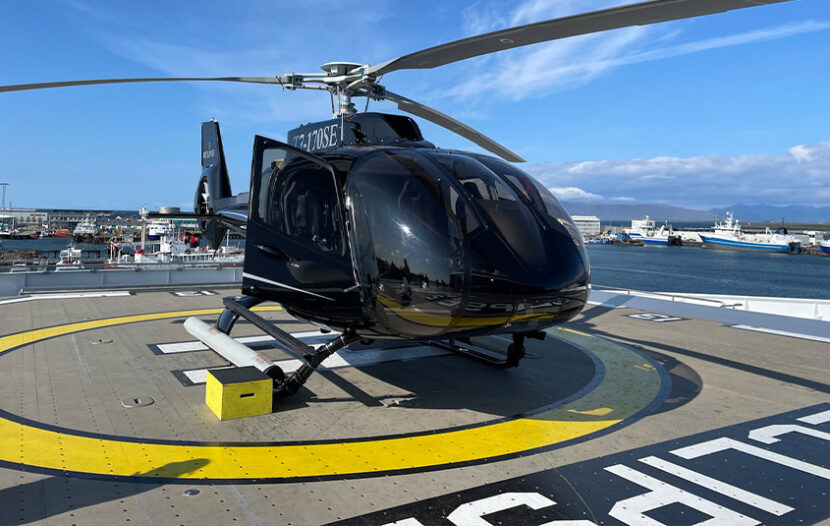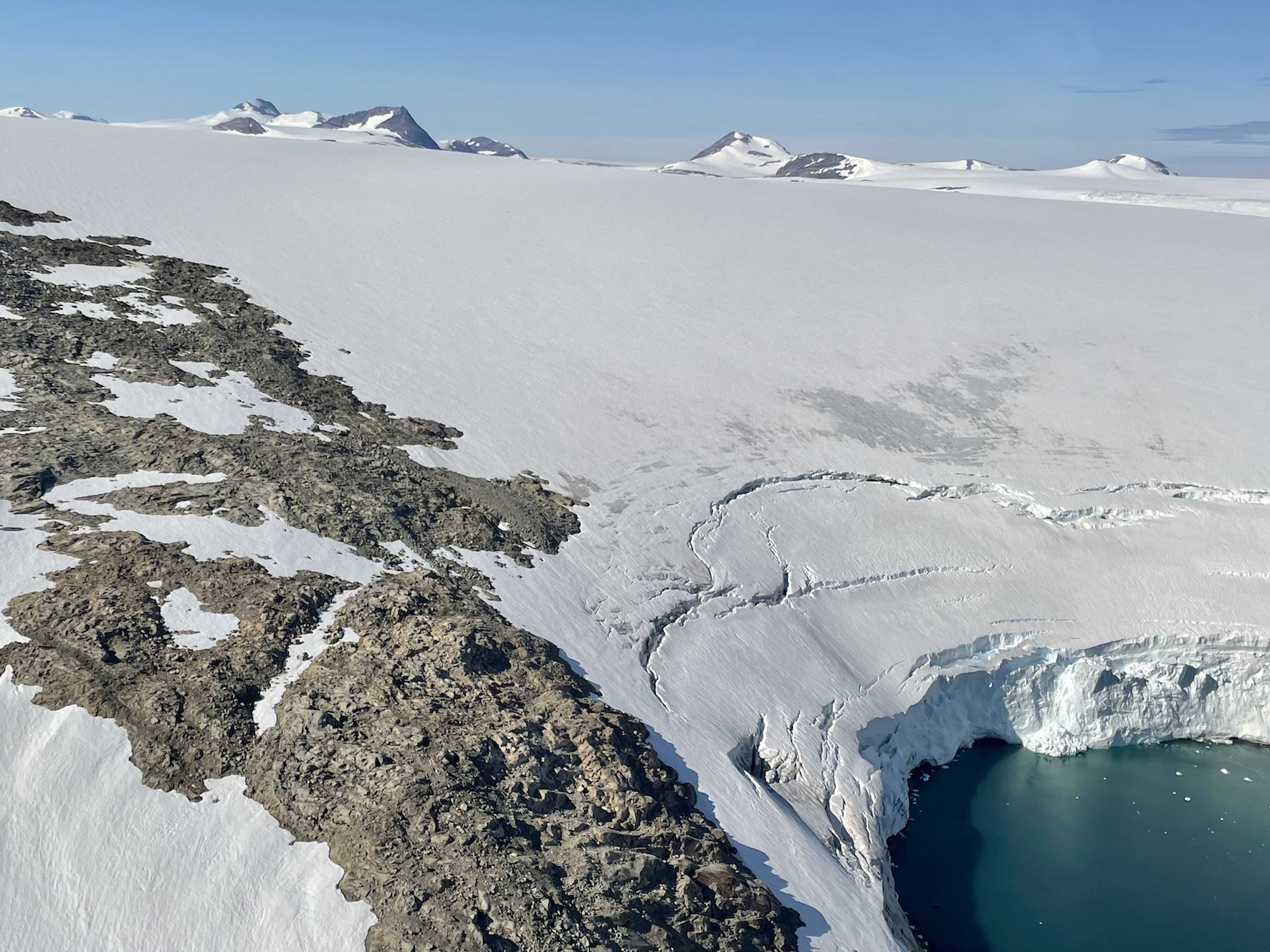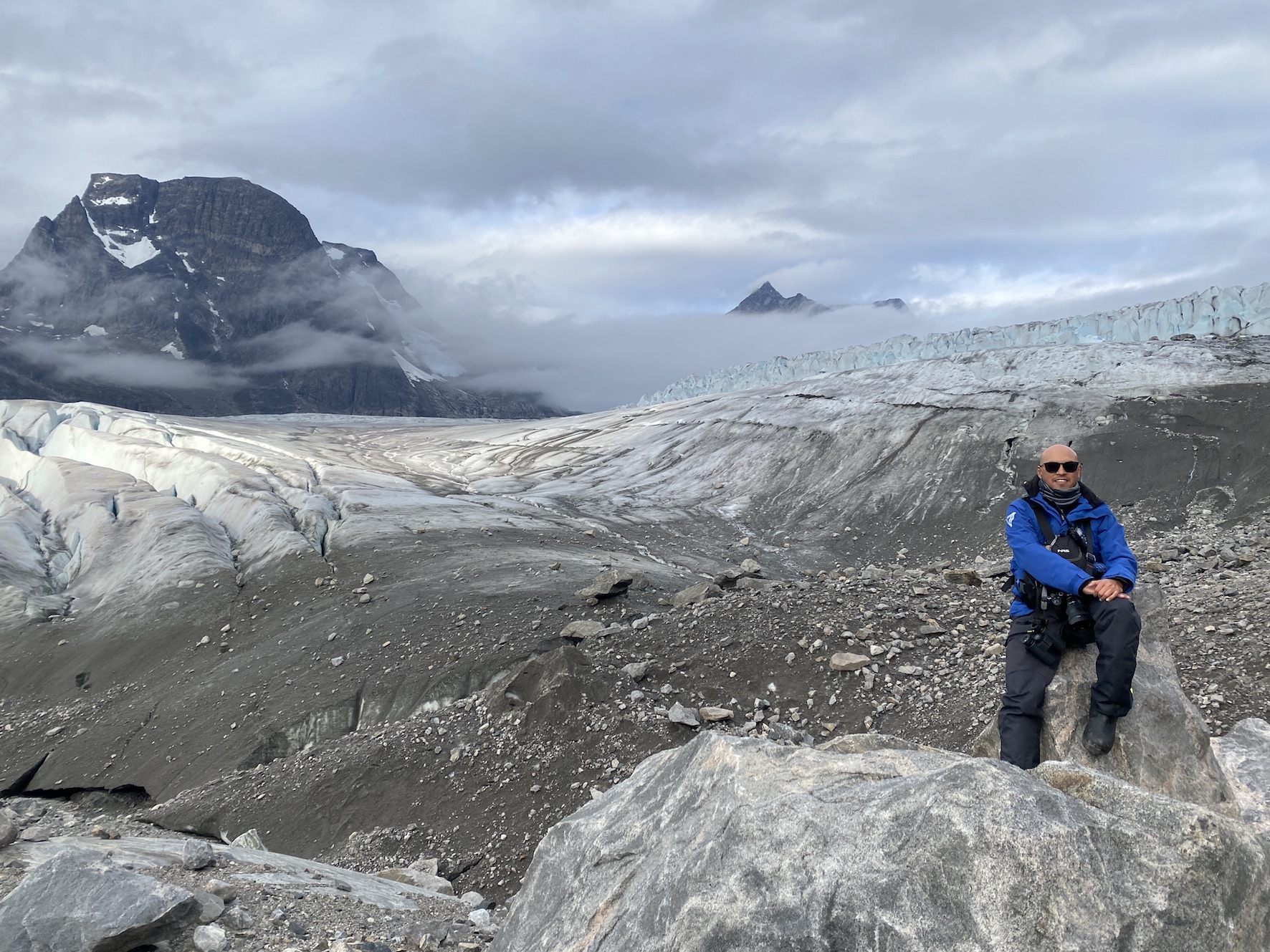ONBOARD SCENIC ECLIPSE II — Captain Erwan Le Rouzic apologized over the ship’s PA system for interrupting dinner.
But, as he explained, there weren’t just five, or 10, or 20 whales surrounding the ship. There were at least 100. “There will be other dinners.”
Most guests agreed with this assessment, springing from their chairs and making a beeline for the observation deck, grabbing cameras and binoculars along the way.
- Helicopter view of a Greenland ice cap
- Xavier Garcia, discovery leader, Scenic Eclipse
In Greenland, the evenings stretch until almost midnight during the height of summer, so the sun was still hanging in the sky, casting a pink glow on the surrounding icebergs.
The captain, crew and discovery team joined guests on the observation deck for a spectacle of at least 100 humpback and fin whales – everyone equally awed at the symphony of blowhole sprays and fluking in all directions.
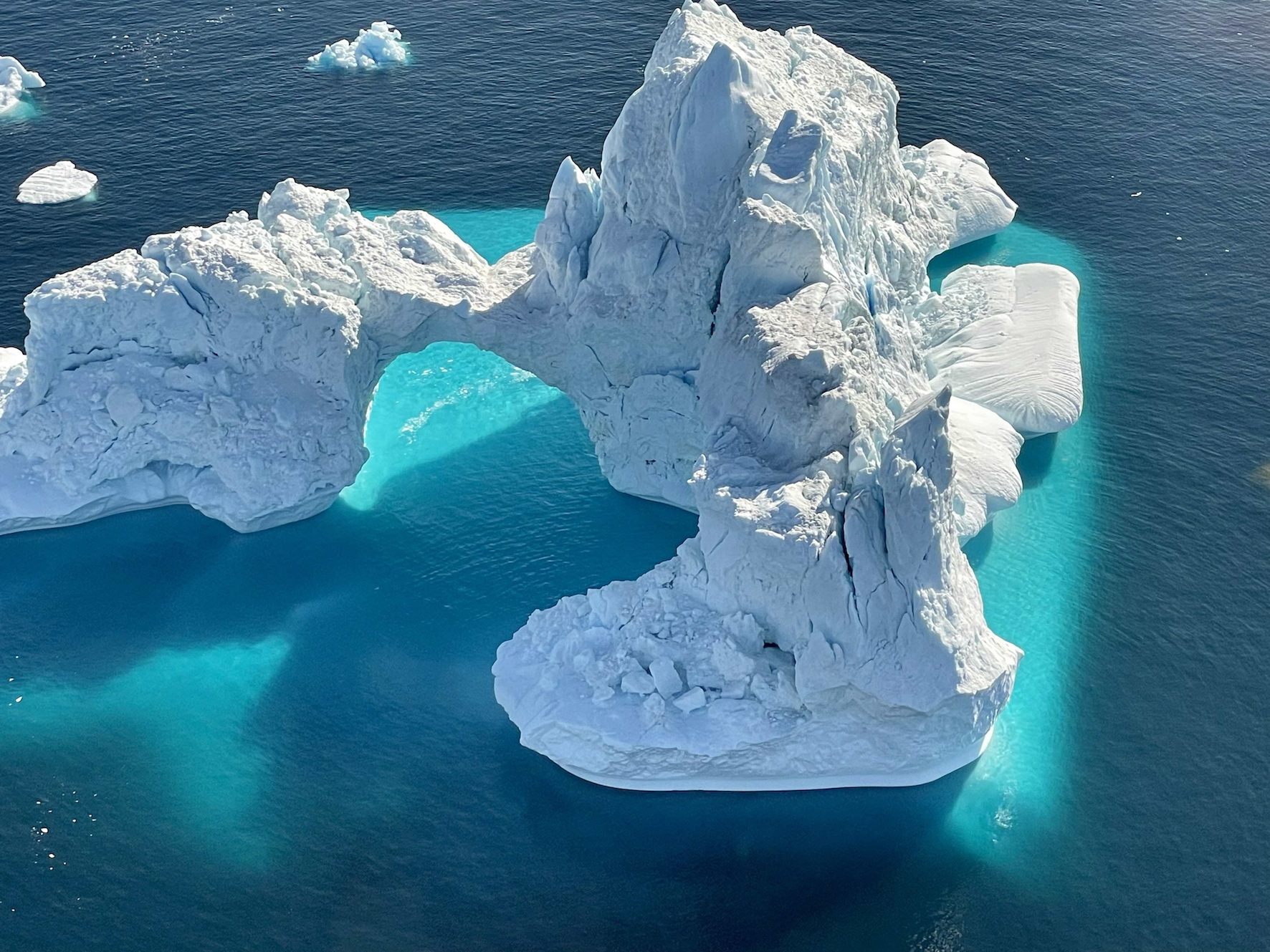
This bird’s eye view of a Greenland iceberg came thanks to the stunning sightlines from Scenic Eclipse II’s helicopter
A rare event like this can’t be planned, but the right ship can take advantage of it. Scenic Eclipse II, which launched in April, has a Polar 6 classification, meaning it’s structurally strengthened to navigate the polar waters of the Arctic and Antarctica.
The discovery yacht was designed to be ultra-luxury (think: personalized butler service) but also to take advantage of cutting-edge technology, like oversized stabilizers and a GPS dynamic positioning system that maintains the ship’s location without dropping anchor onto sensitive seabeds.
There’s also the 360-degree Azipod propulsion system, which allows marine vessels to thrust in any direction with incredible precision, saving fuel – and allowing for the unexpected. Like whales.
“We’re able to slow down and reposition the ship to look at whales,” discovery leader Xavier Garcia told Travelweek. “To me, that’s amazing.”
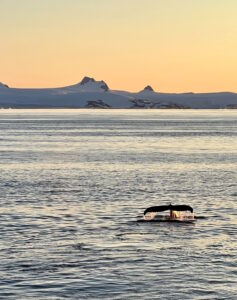
Patience pays off with the sighting of a whale fluke
On another occasion, Captain Le Rouzic slowed down and rotated the ship so guests could view a bearded seal hanging out on an iceberg; another time, the ship was positioned to face a glacier while guests and staff participated in a polar plunge into the invigorating waters of the Arctic Ocean.
This type of cruising falls under the ‘discovery’ category, and it’s where travel agents can play a role in educating their clientele of the differences between a ‘regular’ cruise and a ‘discovery’ or expedition cruise. According to Scenic, a majority of its bookings come from the agency sector.
With a discovery cruise, the idea is to be flexible; the captain and discovery leader use their expertise to design the voyage from day to day. For example, on the eastern coast of Greenland – which is almost entirely uninhabited – the sailing and expedition schedule depends on factors like weather, ice and the potential for polar bears.
Scenic Eclipse II has an open bridge policy; there’s even a couch where guests can sit and listen in on the decisions being made for the day.
“When it’s cold, you go. When it’s raining, you go. Sometimes even when it’s windy – if the swell is not big – you go. The only no-go is when you have low visibility,” said Garcia. With fog, for example, it’s difficult to see an approaching polar bear, and safety comes first. (There’s a highly trained bear safety team on board to assess areas before shore excursions.)
Regardless of the itinerary, guests in this part of the world can expect to see towering granite cliffs, snow-capped peaks and ice in all its forms: caps, sheets, glaciers and icebergs – some the size of city blocks.
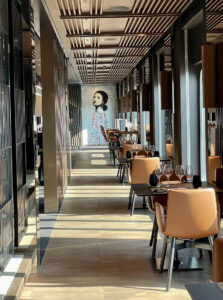
Koko’s Asian fusion restaurant onboard Scenic Eclipse
The discovery team includes marine biologists, environmentalists and historians, who lead excursions and daily theatre lectures. Guests can expect an active trip, with use of the ship’s zodiacs, tandem kayaks and stand-up paddleboards (SUPs are used almost everywhere except the Arctic, because of the risk of polar bears and walruses in the water). A custom-built ‘marina’ on Scenic Eclipse II is designed to make it easier to board zodiacs and kayaks.
There’s also two Airbus H130-T2 helicopters, which are quieter than civil aviation sound limits for flights over national parks and nature reserves. A custom-built submersible, Scenic Neptune II – capable of diving to a depth of 200 metres – will be available on the ship this fall.
Scenic Eclipse II holds no more than 228 guests – and only 200 in the Arctic and Antarctica. A smaller ship is able to navigate through areas that are inaccessible to larger cruise ships, such as Greenland’s narrow Prins Christian Sund fjords, as well as visit smaller communities via zodiacs.
In 2024/25, the discovery yacht will visit Antarctica’s remote Ross Sea and Australia’s rugged Kimberly Coastline, along with warm-weather destinations such as the Indonesian Archipelago, South Pacific and French Polynesia.
Despite its compact size, Scenic Eclipse II offers 10 dining experiences, including 24-hour in-suite dining, as well as a range of bars and lounges with more than 100 whiskeys and a premium wine list curated by master of wine Keith Isaac.
The Senses Spa features a separate sauna, steam room, experience shower and salt therapy lounge for men and women, and a shared outdoor terrace and plunge pool. On the Sky Deck, there’s an outdoor vitality pool (it’s heated) and Sky Bar with indoor and outdoor seating.
Following Scenic’s river cruise policy of full-inclusion, all flights, transfers, tips, shore excursions, in-suite mini-bar, butler service, spa access, on-board dining and premium beverages are included. The only extras are helicopter and submersible excursions, as well as spa services.
Travel agents can find out about current offers, get a link to Scenic’s online booking platform and access Agent Academy Training at Scenic’s agent portal, at www.scenic.ca/agent-portal.
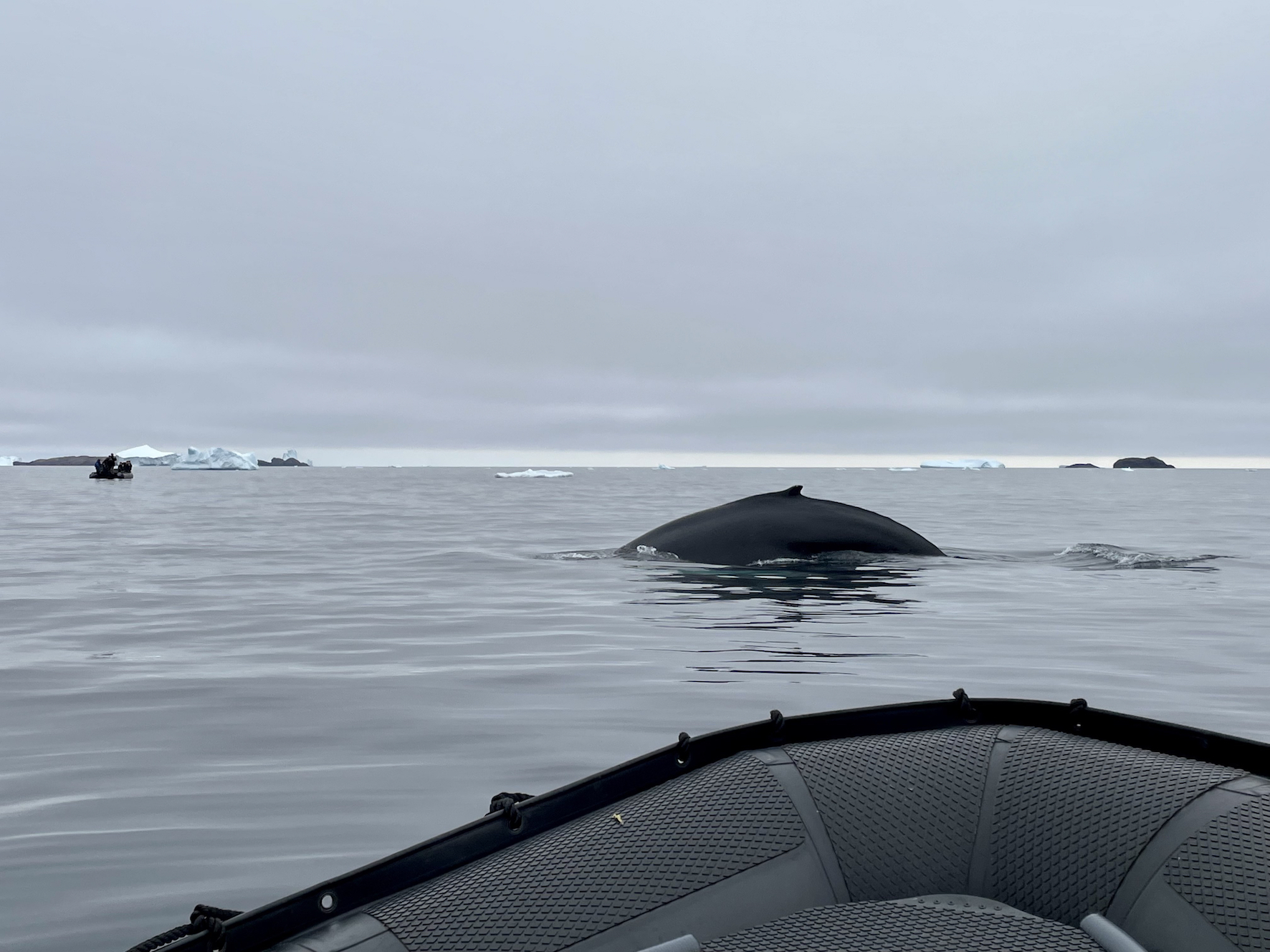
Zodiac excursions bring whale watching front and centre
